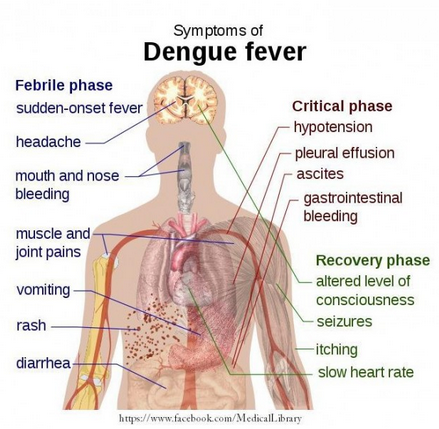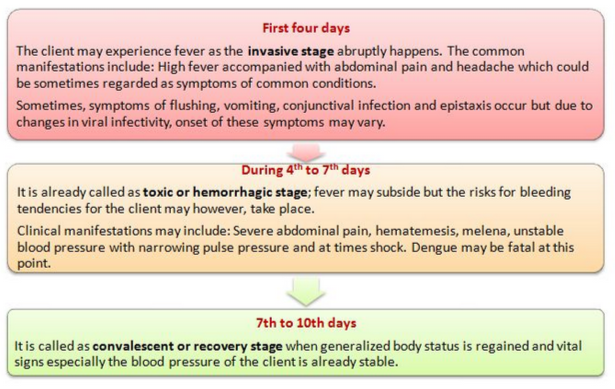Dear Auntie:
I know it can be confusing when a nurse comes and pokes and prods with all of those fancy machines. I am sure you want to know what information your nurse is gathering and how that information will be used to help determine your course of treatment.
Here is some information about how nurses use the information to diagnose actual and potential problems and anticipate or prevent further complications from illness with dengue fever.
I know it can be confusing when a nurse comes and pokes and prods with all of those fancy machines. I am sure you want to know what information your nurse is gathering and how that information will be used to help determine your course of treatment.
Here is some information about how nurses use the information to diagnose actual and potential problems and anticipate or prevent further complications from illness with dengue fever.
Nursing Diagnosis 1. Risk for deficient fluid volume related to fever as evidenced by fast heart rate, low blood pressure, change in mentation, bleeding.
Problem
|
Related to
|
Evidence
|
Desired Outcome
|
Nursing Intervention
|
Deficient fluid volume
|
Sweating, bleeding
|
Fast heart rate
Pallor
Cold, clammy skin
Low blood pressure
Altered mental status
|
Patient is able to intake enough fluid to compensate for fluid loss
through bleeding.
-
Drinking fluid
-
Blood transfusion
|
Monitor fluid intake and encourage fluid intake during fever and
sweating.
Monitor for bleeding and the need for blood transfusion with packed
red blood cells.
|
Nursing Diagnosis 2. Acute pain related to dengue infection as evidenced by the feeling that bones and muscles will break.
Nursing Diagnosis 3. Increased body temperature related to the process of dengue virus infection.
Nursing Diagnosis 4. Risk for bleeding related to dengue hemorrhagic fever infection and thrombocytopenia.
Nursing Diagnosis 5. Deficient Knowledge about the disease process and prevention strategies rleated to lack of information.
References:
1. NANDA Nursing Diagnoses. Dengue Fever. http://www.nanda.org/ Accessed 5/3/2015.






